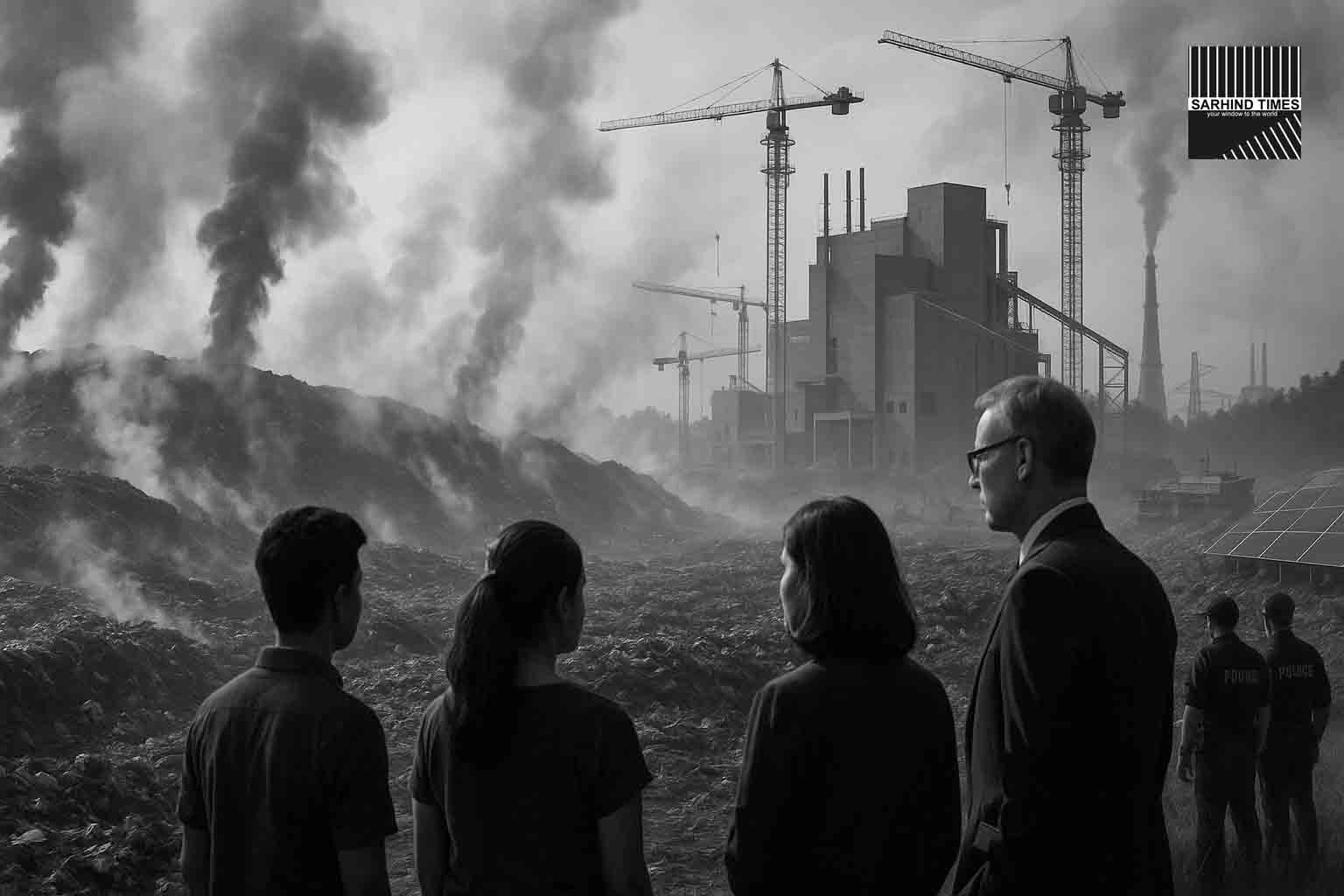Introduction: A Policy U-Turn with High Stakes
The Haryana government has once again altered course on its approach to tackling the Bandhwari landfill crisis near Gurgaon. The earlier proposal to establish a waste-to-charcoal (WTC) plant has now been shelved. In its place, officials have confirmed the setup of a waste-to-energy (WTE) facility, budgeted at approximately ₹500 crore, with similar plants planned in Faridabad and Gurgaon.
This shift underscores the challenges India faces in aligning urban waste management, environmental sustainability, and public trust. For Gurgaon residents, who live daily with the stench, pollution, and health risks of Bandhwari, the news offers both hope and skepticism.
Bandhwari: A Symbol of Urban Waste Challenges
The Legacy of Neglect
The Bandhwari landfill, spread over 30+ acres, has long been one of the most contentious environmental sites in NCR. For years, it has accumulated thousands of tonnes of untreated municipal solid waste from Gurgaon and Faridabad, leaching pollutants into groundwater and releasing toxic gases into the atmosphere.
Repeated fires, unbearable stench, and reports of carcinogenic leachate entering nearby water systems have made Bandhwari a public health hazard.
The Promise of Waste-to-Charcoal
Initially, the state government had floated the idea of a Waste-to-Charcoal (WTC) plant. This technology aimed at pyrolyzing waste into charcoal that could be used industrially. However, critics argued:
- The technology was unproven at scale.
- It risked becoming another white elephant project.
- It diverted attention from segregation and recycling—the real solutions.
The Waste-to-Energy Pivot
The new plan focuses on a Waste-to-Energy (WTE) plant at Bandhwari.
How It Works
- Incineration of non-recyclable waste at high temperatures.
- Heat drives turbines to produce electricity.
- By-products include ash (to be managed safely) and emissions (requiring filters and scrubbing).
The Case for WTE
- Energy Recovery: Generates electricity from otherwise useless waste.
- Volume Reduction: Reduces landfill mass by up to 80–90%.
- Scalability: Can handle Gurgaon’s growing waste output.
The Risks
- Air Pollution: If filters fail, dioxins and particulates can worsen NCR’s already severe air crisis.
- Cost Overruns: WTE plants are capital-intensive.
- Public Distrust: Residents doubt whether proper safeguards will be followed.
Financials and Policy Direction
At ~₹500 crore per plant, the WTE model represents a significant financial bet. It is part of a broader vision of modern waste infrastructure in NCR. Authorities claim it will:
- Generate tens of megawatts of electricity.
- Reduce dependence on landfills.
- Attract private investment through PPP (Public-Private Partnerships).
Yet, critics highlight a troubling pattern: frequent policy U-turns (from composting to WTC to WTE) suggest reactive governance rather than a long-term plan.
The Public Perspective
Residents of Gurgaon have been battling Bandhwari for over a decade. Civil society groups argue that:
- Segregation at source should be prioritized over expensive end-of-pipe solutions.
- Gurgaon generates ~2,000 tonnes of waste daily, much of which is recyclable if properly segregated.
- WTE risks becoming a “burn-everything” approach, discouraging recycling and composting.
At the same time, some residents cautiously welcome the move, hoping that at least some progress will be visible in managing the landfill mountain.
Environmental and Health Implications
- Groundwater Safety: Proper lining and leachate management critical to prevent carcinogenic seepage.
- Air Quality: Gurgaon already suffers AQI levels above 300 in winters; WTE emissions must be tightly controlled.
- Biodiversity Loss: Bandhwari is near the Aravalli forests, which are ecologically sensitive zones.
Failure to mitigate risks could worsen Gurgaon’s environmental crisis instead of resolving it.
Global Lessons: WTE in Context
Countries like Sweden, Japan, and Singapore successfully run WTE plants with advanced emission controls and strict waste segregation. However, countries like India and China have faced public protests over pollution and health hazards when oversight is weak.
For Gurgaon, the lesson is clear: technology alone cannot solve waste problems—governance, transparency, and accountability are equally important.
Governance and Transparency Needs
- Independent Audits – Monitoring of emissions and leachate.
- Citizen Oversight Committees – Local representation in decision-making.
- Integration with Segregation Systems – Incentivizing households and RWAs to separate waste.
- Long-Term Contracts – Clarity with private operators to avoid project abandonment.
Political Dimensions
This move comes as urban environment and governance are increasingly becoming political issues in Haryana. Opposition leaders have already criticized the government for “policy flip-flops,” while ruling officials defend the pivot as “technological upgrading.”
With Gurgaon being both a corporate hub and a residential magnet, the visibility of Bandhwari makes it an electoral issue too.
Conclusion: Hope, Skepticism, and the Way Forward
The Bandhwari WTE announcement is a major policy shift, one that could reshape waste management in Gurgaon and Faridabad. If implemented with scientific rigor, financial discipline, and community trust, it may finally begin to resolve the landfill crisis.
But without systemic change—segregation at source, recycling economies, strict monitoring—the WTE plant risks becoming another expensive distraction.
For Gurgaon’s citizens, the question remains: will Bandhwari finally turn from a symbol of neglect into a model of sustainable urban management?
#BandhwariLandfill #WasteToEnergy #CleanGurgaon #UrbanSustainability #ClimateAction #SarhindTimes #PolicyMatters #WasteManagement






















+ There are no comments
Add yours